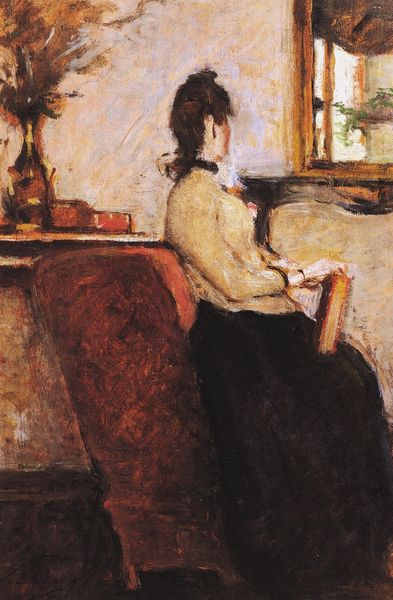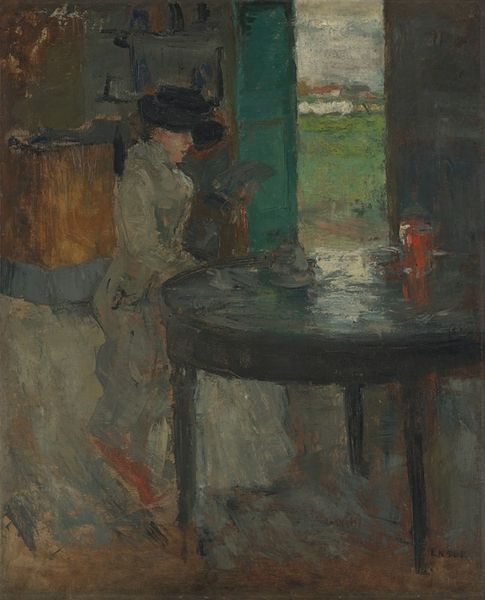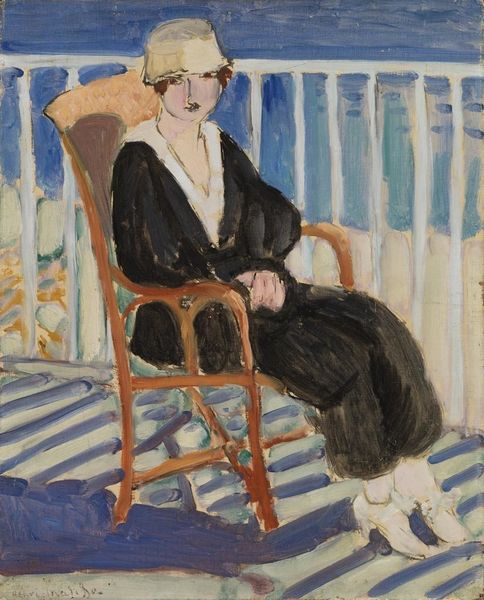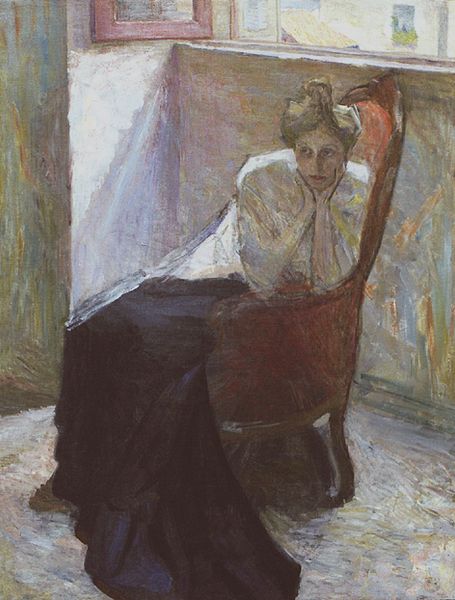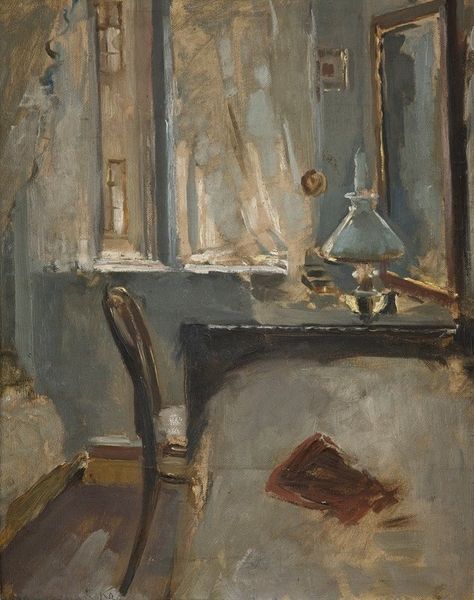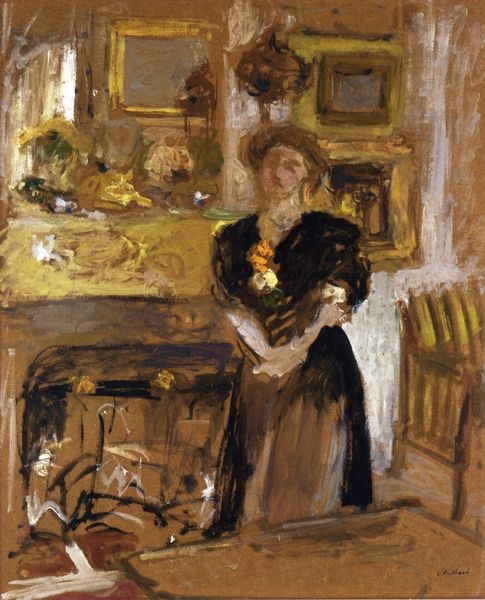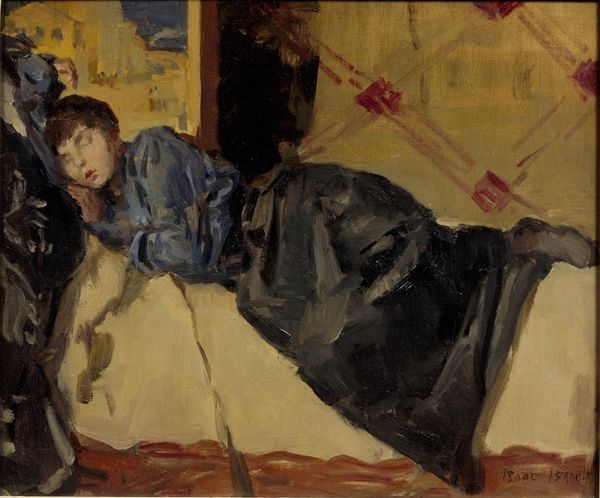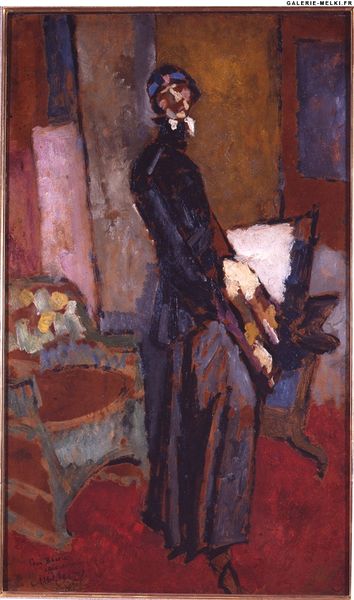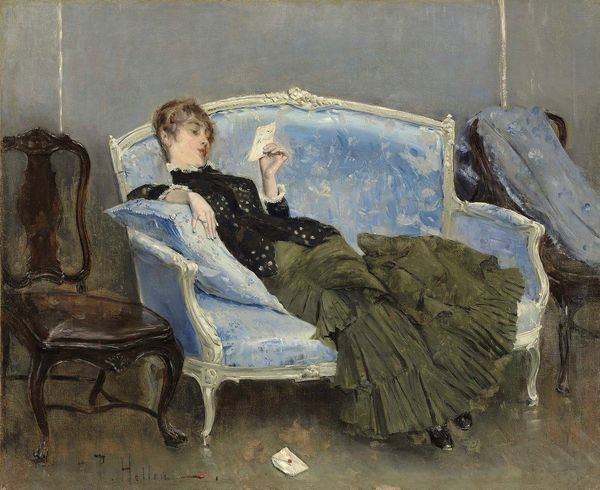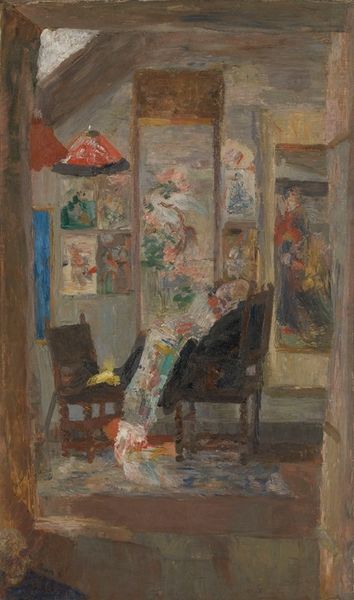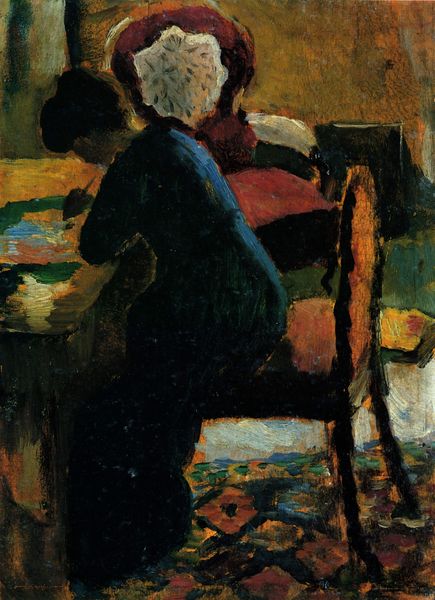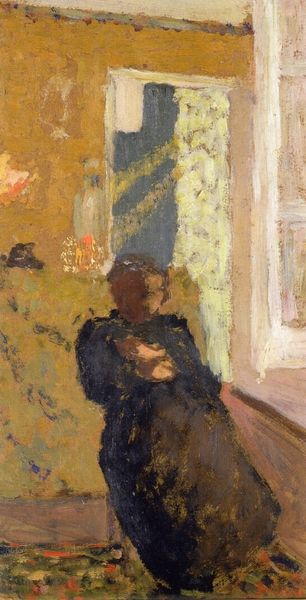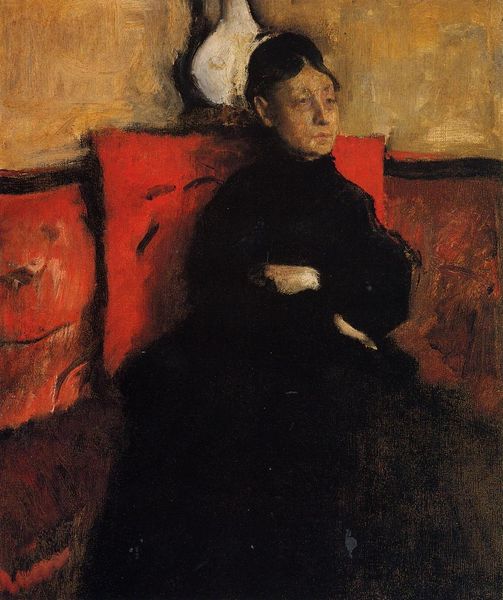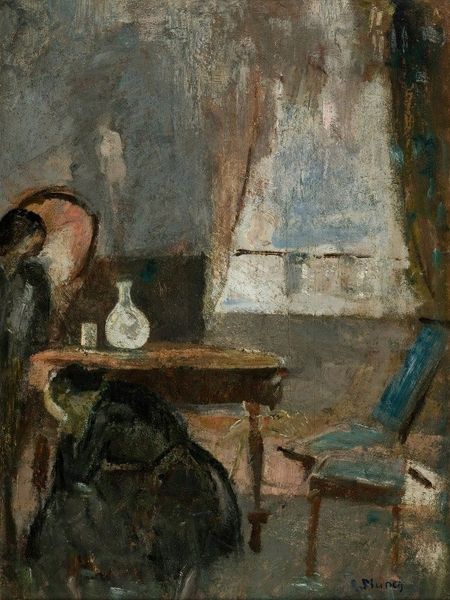
Copyright: Public domain
Curator: Let's turn our attention to Lesser Ury's "The Red Carpet," created in 1899 using oil paint. What are your initial thoughts on this piece? Editor: There’s a palpable sense of solitude here. The palette is restrained, mostly somber blues and blacks, punctuated by that arresting red. It makes one concentrate on the texture of the visible brushstrokes. Curator: I find it interesting to consider the socio-economic context. Ury was painting a scene of domestic life. This was at a time of vast social change where labor and class were intensely debated, how would domestic labor relate to this shift? Editor: From a formal perspective, I’m drawn to the composition. The figure is positioned with their back facing us, almost consumed by shadow and light, the composition relies heavily on the geometry of interior architecture with window shape, chair placement. The high horizon gives the view to outside a very important role to balance the subject's overwhelming sense of melancholy. Curator: It speaks, perhaps, to the increasing isolation of individuals even within domestic environments. What impact do industrial modes of production and alienation of labor have to create this state of isolation and loneliness? Editor: Absolutely. And notice how the window acts as a frame within a frame. That exterior urban view is not inviting, not romantic but merely representational, it creates more focus on the interior of this domestic scene and its tension is evident through stark color differences. The choice and usage of color is more than representational, rather emotionally performative. Curator: I think that is a key point! Lesser Ury presents, for example, in the contrast between the carefully arranged interior and what kind of industry, capital, and extraction it takes to get to this staging; who is excluded, who has access? These material realities seem to shape this "expressionist" rendering as we grapple to decipher this tension between isolation and what society has wrought upon us as a result. Editor: Seeing it that way, yes, the emotional impact deepens as we view art-making processes, and materials representing class tension. What a stimulating experience to approach an artwork through such diverse lens! Curator: Indeed. Ury encourages us to rethink conventional assumptions and acknowledge the nuanced relation between the artwork and a whole array of industrial-societal contexts and the cost this may bare on domesticity.
Comments
No comments
Be the first to comment and join the conversation on the ultimate creative platform.
